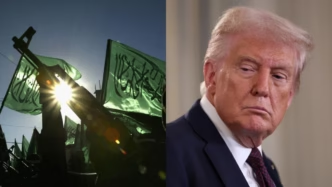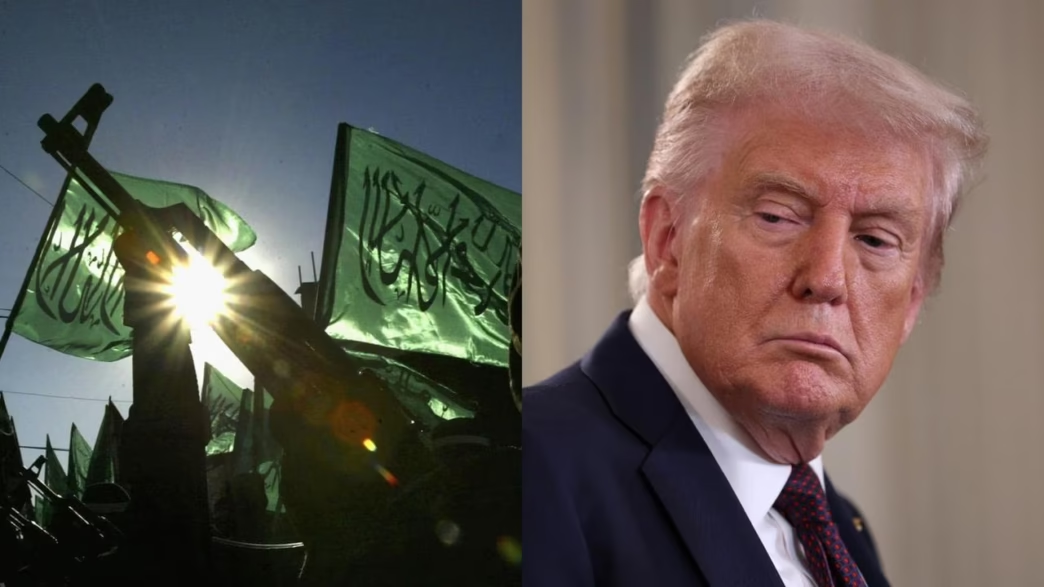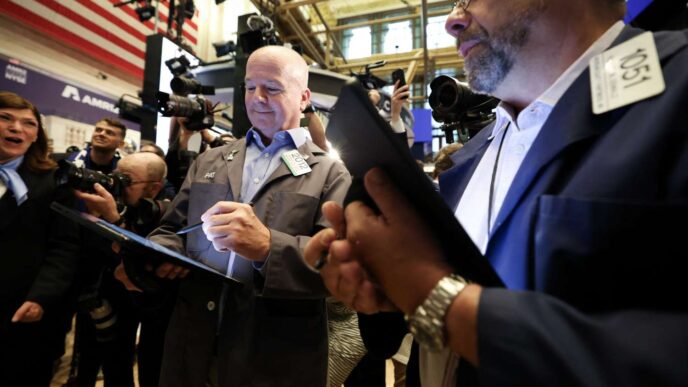In a development that has drawn global attention, Hamas has partially accepted U.S. President Donald Trump’s peace plan for Gaza, signaling a potential turning point in one of the world’s most intractable conflicts. The move, while tentative, opens a narrow window for diplomacy after months of devastating violence and humanitarian crisis in the Gaza Strip.
A Breakthrough After Months of Bloodshed
The announcement came after a series of indirect communications between Trump’s team and intermediaries from regional powers, including Qatar, Egypt, and Turkey. According to insiders familiar with the negotiations, Hamas agreed “in principle” to several non-military components of the plan, including the establishment of a transitional governance structure, international humanitarian aid corridors, and the phased release of hostages.
However, Hamas stopped short of endorsing key security provisions that call for full demilitarization of Gaza and the disbandment of its military wing. The group’s leadership stated that such terms would require “further national dialogue” among Palestinian factions before any binding commitment could be made.
Still, the partial acceptance marks one of the most significant diplomatic gestures by Hamas in recent years—particularly since the escalation of violence that began in 2024.
Inside Trump’s Gaza Peace Plan
Trump’s plan, unveiled in late September 2025, represents his second major attempt to reshape Middle East diplomacy following his administration’s earlier Abraham Accords. Unlike those agreements, which focused on normalization between Israel and Arab states, this initiative zeroes in directly on the Israeli-Palestinian conflict—a challenge that has eluded successive U.S. presidents.
The 20-point proposal includes several stages designed to stabilize the region:
- Immediate Ceasefire – Both sides would halt offensive operations under international supervision.
- Hostage-Prisoner Exchange – Hamas would release Israeli and foreign hostages in exchange for an agreed number of Palestinian detainees.
- Humanitarian Corridor – A UN-led coalition would oversee aid delivery, reconstruction, and civilian evacuation where necessary.
- Transitional Authority – Gaza would be administered by an interim council composed of Palestinian technocrats and international observers.
- Demilitarization and Long-Term Governance – Over a multi-year period, armed factions in Gaza would disarm in exchange for recognition and security guarantees.
Trump’s plan also emphasizes economic reconstruction, proposing a multi-billion-dollar investment package funded by the U.S., Gulf states, and international donors to rebuild infrastructure, schools, hospitals, and utilities destroyed during the conflict.
Reactions Across the Region
Israel’s Position
Israeli Prime Minister Benjamin Netanyahu responded cautiously, welcoming Hamas’s “partial acceptance” but reiterating that Israel would not negotiate under fire. Israeli officials emphasized that any deal must ensure the complete dismantling of Hamas’s military capabilities and guarantees of security for Israeli citizens.
Military analysts note that Israel has already scaled down airstrikes in Gaza in response to U.S. diplomatic pressure, but continues targeted operations against suspected militant cells.
Palestinian Leadership
Within Palestinian political circles, reactions were mixed. The Palestinian Authority (PA) in Ramallah expressed tentative approval of the plan’s governance framework but criticized Trump’s history of bias toward Israel. Some PA officials see the plan as a possible opportunity to reassert influence in Gaza, which Hamas has controlled since 2007.
Regional and Global Response
Arab nations—particularly Qatar, Saudi Arabia, and Egypt—welcomed Hamas’s gesture as a step toward de-escalation. European leaders echoed these sentiments, urging both sides to “turn this moment into meaningful progress.” The United Nations announced it was prepared to facilitate the humanitarian components of the plan if a formal ceasefire were declared.
Meanwhile, U.S. State Department officials acknowledged that Trump’s backchannel diplomacy had influenced ongoing talks, though the current administration stopped short of formally endorsing the plan.
Humanitarian Context: A Desperate Need for Relief
The humanitarian situation in Gaza remains dire. Months of relentless bombardment have displaced over 1.2 million people, crippled essential infrastructure, and pushed hospitals to the brink of collapse. Aid agencies warn of severe shortages of food, clean water, and medical supplies.
If implemented, the humanitarian corridor proposed in Trump’s plan could provide the first large-scale relief effort since the conflict’s escalation. UN and Red Crescent teams are reportedly preparing logistical frameworks for rapid aid delivery once hostilities subside.
The Political Gamble Behind Trump’s Move
For Donald Trump, the peace plan represents both a strategic and political calculation. It allows him to re-enter the global stage as a power broker ahead of potential political ambitions in the U.S., while also contrasting his assertive foreign policy record with what he describes as “weak and indecisive diplomacy” by current leadership.
Analysts suggest that Trump’s approach—combining high-stakes pressure with incentives—may appeal to regional actors fatigued by years of stalemate. Yet critics warn that without sustained international backing, any agreement could quickly unravel.
The Road Ahead
The partial acceptance by Hamas sets the stage for what diplomats are calling a “test of sincerity.” The coming weeks will determine whether both sides can build on this fragile diplomatic opening or whether entrenched mistrust will once again lead to violence.
Three possible trajectories are emerging:
- Constructive Momentum: Both sides commit to a limited ceasefire and initiate the first stage of the plan, allowing humanitarian relief to flow.
- Stalemate: Political disagreements within Hamas or Israel delay progress, resulting in only a temporary reduction in hostilities.
- Renewed Escalation: A breakdown in talks leads to a resurgence of violence, potentially worse than before.
Conclusion: A Moment of Cautious Hope
Hamas’s partial acceptance of Donald Trump’s Gaza peace plan offers the first tangible diplomatic breakthrough in months of conflict. While far from a comprehensive settlement, it provides a framework for dialogue, de-escalation, and humanitarian access—three ingredients desperately needed to prevent further catastrophe in Gaza.
Whether this fragile truce evolves into a lasting peace will depend not only on the political will of Israel and Hamas but also on the sustained commitment of international actors to hold both sides accountable and support the rebuilding of a shattered territory.
For now, the world watches closely—hopeful, yet wary—that this could be the first real step toward ending one of the most painful chapters in the region’s modern history.
















